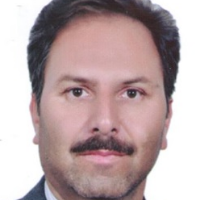Identifying and Ranking Important Factors of Desertification in Khorasan Razavi Province using Delphi Method
Desertification is one of the most complex environmental threats with negative socio-economic impacts. Understanding the spatio-temporal characteristics of this process is possible by identifying, monitoring, and evaluating important criteria and indicators (Akbari, Ownegh, Asgari, Sadoddin, & Khosravi, 2016). Each of the criteria, effective in desertification can include several important indicators. For each indicator, accurate identification and evaluation of the effective mechanisms and its role in desertification will contribute significantly to proper land management. Many studies have been done on desertification. However, researchers believe that desertification can only be satisfactorily evaluated when appropriate and valid criteria and indices are determined. So far, it has not been possible to determine indicators that can be used at different global, regional, national, and local levels (Akbari, 2016; Akbari, Jafari Shalamzari, Memarian, & Gholami, 2020). Therefore, this research, with an exploratory approach, attempts to identify and formulate the main and key factors affecting desertification expansion in Khorasan Razavi province. Identification and prioritization of key desertification factors based on expert opinions, field studies, and scientific approaches can play an important role in better management of Khorasan Razavi province.
The study region, with an area of 11.6 million hectares and a population more than 6 million people (8 % of Iran's population), is located at 56o 30' to 61o 10’ E and 34o 15’ to 37o 42’ N. This area is adjacent to Turkmenistan in the north and northeast, running a border of 531.6 km, and to Afghanistan in the east, with a border length of 302 km (Feyzi Koushki, Akbari, Memarian, & Azamirad, 2019(. Official reports existing in the Department of Natural Resources and Watershed Management of Khorasan Razavi Province have shown that increasing the number of wells, conversion of rangeland and forest to agricultural and residential land and land salinization have been effective human factors in land degradation. According to official reports, soil erosion per capita in Iran is about 15 tons per hectare per year, which is estimated to be about 18 to 20 tons per year for Khorasan Razavi province, indicating the intensity of soil erosion in eastern parts of Iran (Akbari, Neamatollahi, & Neamatollahi, 2019).
Two methods were used for data collection. First, a number of different desertification intensity models and significant factors affecting the desertification process were evaluated. Then, a questionnaire was designed to determine uncertainties based on the initial round of questionnaires distributed among the statistical population (including 113 experts and specialists). The responses were subsequently assessed based on the Delphi method (Feyzi Koushki, Akbari, Memarian, & Azamirad, 2019). In this study, field studies were used as the basis for designing questionnaires. The required data were collected to design a questionnaire by the defined standards. The questions were answered on a 5-point Likert scale (low to negligible, low, moderate, high and very high). The ranking scale was used to evaluate the indices for data extraction and analysis were used. The statistical population initially comprised of 130 experts, executives, and specialists in the field of natural resources and environment. Questionnaires were distributed among the statistical population in two rounds using the Delphi method. The Friedman test was also used to compare the mean scores.
In this study, the validity of the questionnaires was approved through expert opinion. Finally, ten questions (from 90 questions) were omitted and some of the questions were adjusted. The reliability of the questionnaire was determined by Cronbach's alpha coefficient. Cronbach's alpha was calculated as 0.823 using SPSS (statistical package for social sciences). The results of the first round of Delphi showed that the most important desertification criteria were climate, water, human activities, socio-economic criteria, vegetation, agricultural activities, soil, geology, and erosion criteria, respectively. In the second step, after analyzing the questionnaires, human activities, climate, water, socio-economic criteria, vegetation, agricultural activities, soil and geology, and erosion criteria were ranked as the most important criteria, respectively.
The most important desertification criteria in Khorasan Razavi province were ranked using the Delphi method by evaluating the main effective desertification factors based on the opinions of experts in the field of natural resources. The results showed that human activities, climate, water, socio-economic criteria, agricultural activities, vegetation, soil and geology, and erosion criteria were important factors in desertification expansion. The results of this study will be useful for developing management plans and reducing the negative impacts of land degradation. It is recommended to use appropriate statistical methods for assessing the status of land degradation and desertification risk and to prioritize effective factors and criteria for presenting appropriate solutions. Therefore, this exploratory research attempts to identify and formulate the main and key factors affecting desertification expansion in Khorasan Razavi province. Identification and prioritization of key desertification factors based on expert opinions, field studies, and scientific approaches can play an important role in better management of Khorasan Razavi province.
- حق عضویت دریافتی صرف حمایت از نشریات عضو و نگهداری، تکمیل و توسعه مگیران میشود.
- پرداخت حق اشتراک و دانلود مقالات اجازه بازنشر آن در سایر رسانههای چاپی و دیجیتال را به کاربر نمیدهد.





